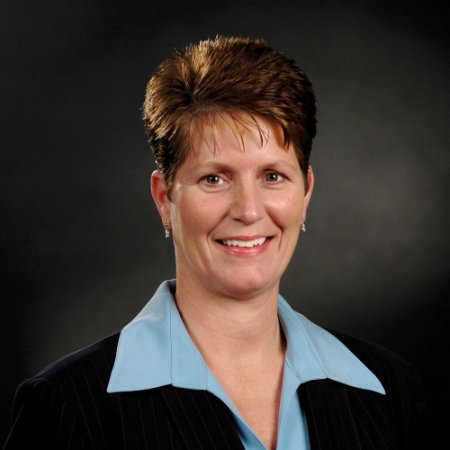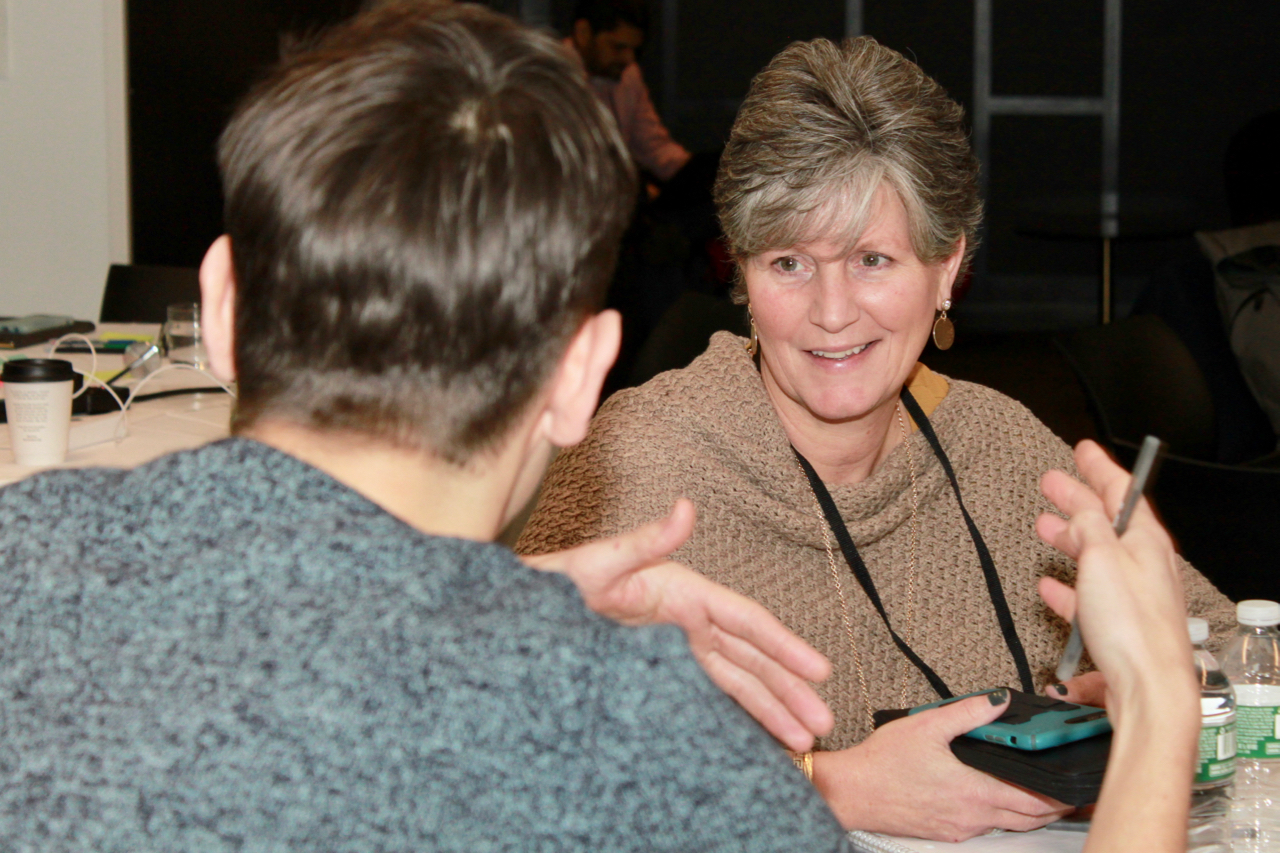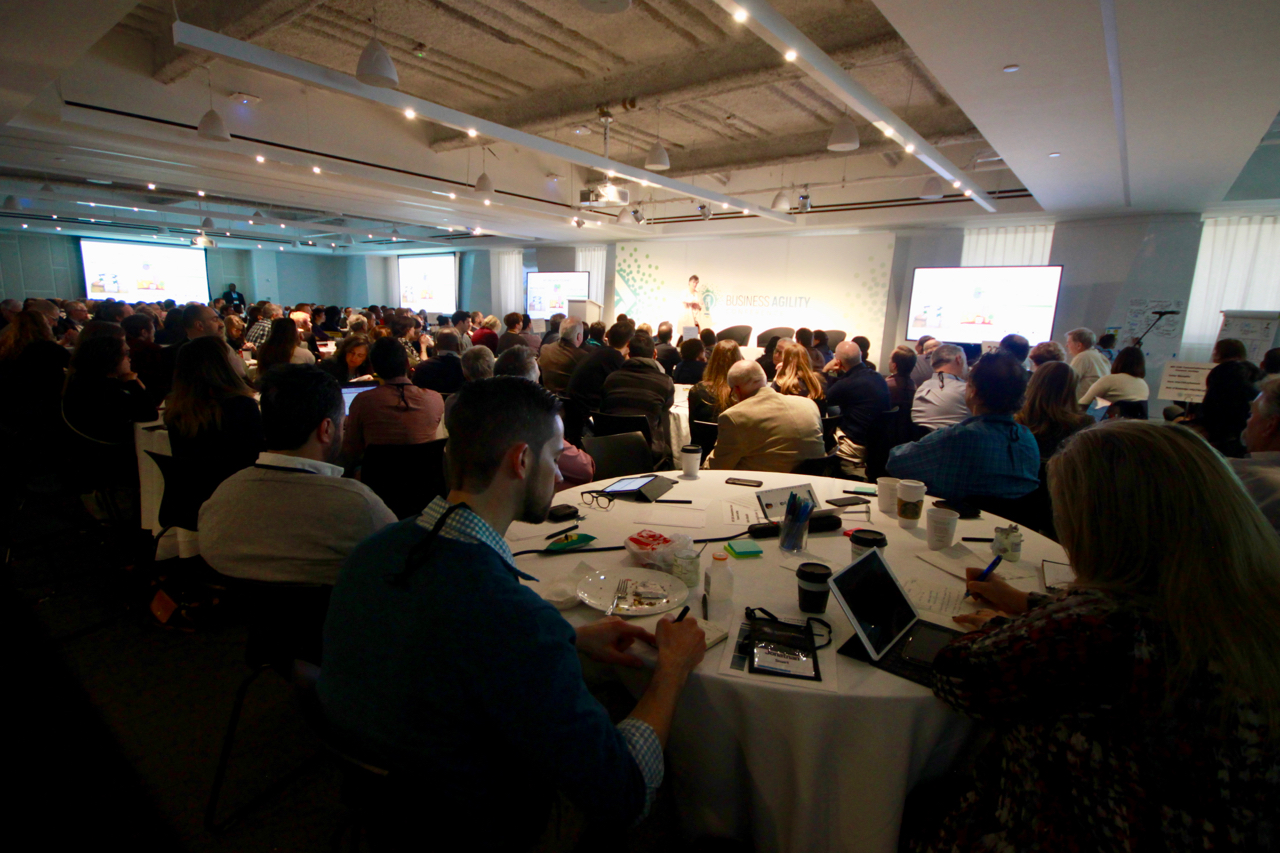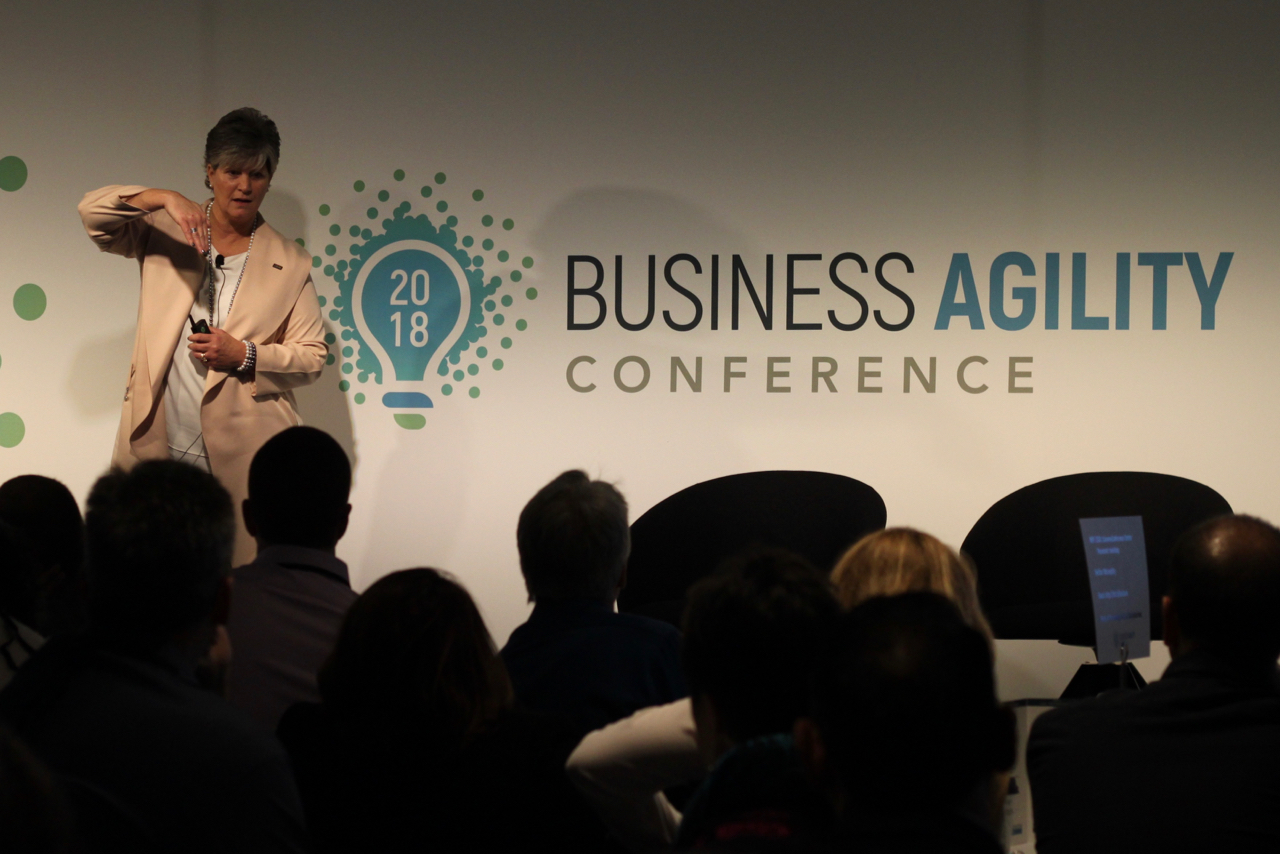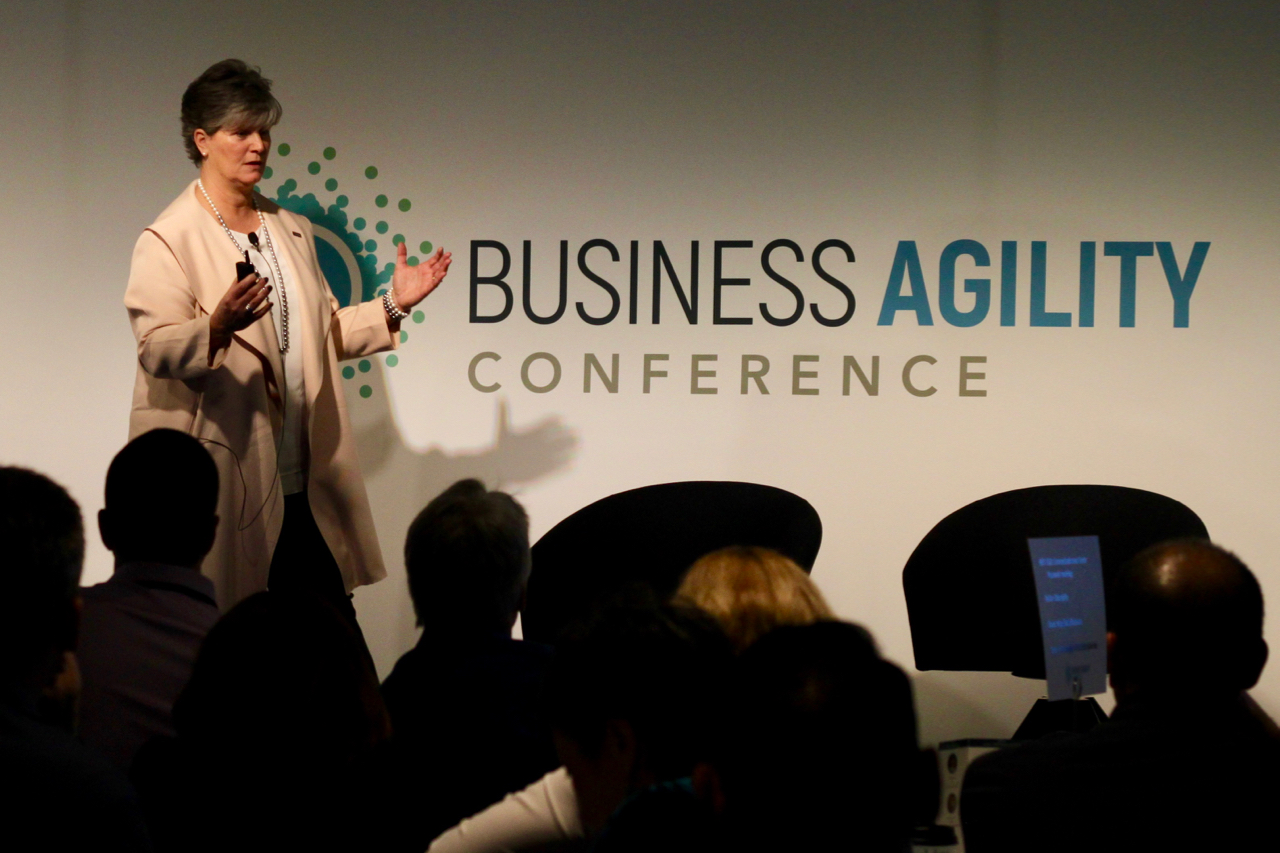I have some fans! I also have a clock. It's tough to follow Evan, but I've got to do this talk in 18 minutes, starting now. So it's called "Are You Ready to Become a Butterfly?", and here's why I chose that, let me give you the context. So a butterfly, in case you didn't know, is like the only living being that can change its DNA. A caterpillar's DNA is completely different than a butterfly's DNA, and so when you start to think about that, that's dramatic, transformational change - physically. Right? But also kind of that whole DNA that goes along with what makes a caterpillar tick is a little bit different than what makes a butterfly tick, right? So I chose 'butterfly' because it represents a change, greater freedom, at the same time, courage, and then this process of growth. So what I'm going to do, if I can find this, is I'm going to tell you about my personal growth journey.
I don't want any comments about my charts. They're mine, OK? And somebody a long time ago told me that people who use PowerPoint generally don't have power and they usually don't have a point. I don't have any power. I don't, I don't yield my inner strength from power, but I do love to influence people and help guide them. I do have a point. So, no critique on the charts.
Excitement, wonder and curiosity. So I'm going to set the context. I'll take you back. Very small child, long time ago: elementary school. We did a science experiment that was to watch a caterpillar become a butterfly. Was one of probably my favorite experiments, aside from dissecting a pig, but that's a different conversation. So I came in and I can remember seeing an aquarium where the teacher had filled it with caterpillars, put some sticks, put some leaves, put a little bit of water in there and said, everybody can pick a caterpillar.
So I ran home, told my mom "I'm going to do this great thing", so excited about it. Picked my caterpillar, of course it was the biggest one - I was going to win. And so we watched it. But every day we had to watch, observe and record. What did we see? What did we learn? What did we think was going to happen next? Right. So very methodical - didn't know it at the time - but going through this Agile process of watching, learning, iterating. So we fed the thing, the caterpillar, leaves. Every day I would go home and say, "oh, it's moving around, it's eating, things are great". Next time I come in, "Mom, you won't believe it. It's got like this white blanket it's growing". Didn't know what it was, but this was fabulous. Every day I would come back and see it and report home.
Now the thing is completely wrapped in a blanket and I'm worried, like, what's happening? Like, is it dead? Where did it go? How could this be? So you come back, and eventually it starts to emerge. And the excitement there was like something is coming out. I don't know what it is yet. I don't know what it looks like, but it's coming out. So finally, when it comes out, and if you've ever seen this happen, it's fantastic. There it is hanging from a twig. It's just hanging! I'm like, it's out, but it's dead! It's just hanging there. But if you know the story of a butterfly, it has to let its wings dry a bit before it can take flight. So finally we come back. There's butterflies all throughout this aquarium, which, of course, has this nice screen on it, keeping them all caged in there, and the next activity we did was let's take them out and release the butterflies.
So we went out. All of us stood there, took the screen off and watched these beautiful butterflies fly away. And so I was happy, because I had gone through this process, but I was very, very sad because my butterfly was gone. So I decided I was going to go home and do the same thing.
This is where the failing fast comes in. See that nice jar there? So, I didn't have an aquarium. We had cats and dogs and I lived across from a farm, so we had cows, chickens, pigs. Lots of caterpillars and trees. But I didn't have an aquarium. So I went into the refrigerator, saw a pickle jar. Dumped out all the pickles, washed it with soap and water, disinfected it - still smelled like pickles, but I thought I did a good job. Went out to the trees, picked up one caterpillar, but that wasn't enough, had to scoop up two because you always have to have two. Put it in the jar, screwed the lid on, ran into the house. Showed my mom, "Look, I'm going to do the same thing!", she said, "Oh, that's great. Good luck." Put it next to my bed, went outside to play. When, went in that night, brushed my teeth went to bed. They're moving around, everything's happy. Right? Get up the next morning? Dead, completely dead. I was devastated! What happened? So my mom said, "What do you think went wrong? Did you do the same thing at school?", I said, "Well, I didn't have an aquarium, I had a jar."
"Where's their food?"
"Oh, I forgot to give them leaves!"
"Do you have holes in the lid?"
"Why do I need holes?"
"Because they're living, breathing things, they need air!"
"Oh. That's why it died." So five times later, I finally created a butterfly. I didn't create it, but I thought I did. So that was my failing fast, but I, each time I forgot something. Nobody was telling me, I was just trying from memory to recreate it. Right. Each time I forgot something.
Fast forward about forty-five years. Reenergize. My husband and I are celebrating our 30th wedding anniversary and I say, "we should go to Key West!" - Key West, Florida for those of you who are not from the United States. I had never been there before, been to other parts of Florida, but never been to Key West.
As a typical tourist, I say, "we MUST do the top ten things in Key West!". We take another couple with us, good friends. So I proudly announce, I've done research, and the top ten things to do in Key West are - guess what? Go to a butterfly museum, and we're doing it. You can imagine the delight on, not only my husband's face, but the other couple who have gone for just the adult beverages and the beaches. I'm taking us to a butterfly museum.
So we go and it's in this really quaint old house. We walk in and there's a fabulous display that you sort of navigate yourself through and self educate. But I went through the whole process again of understanding what happens to a butterfly, how they go through that caterpillar stage, chrysalis stage and then finally come out as a butterfly, and they had all kinds of great things on there. I - they were done - I spent the time re-learning and educating myself, and getting super excited about this butterfly notion again.
This was back in 2016. When you emerge, you get finished, your learning journey, - which they had done way faster than I did - credited all to speed reading. They already knew this stuff. You walk into a very large kind of arboretum, and there are thousands of butterflies. They're all over you, they're around your head, they land on you, and they follow you as you sort of walk through this beautiful path. So that was my reenergizing. Didn't know it at the time, but I thought, wow, this is awesome.
So, how could I transform myself? And this is how I came to be a learning leader. It was 2015, so a year before I'd gone to Key West, and as you write your stories, you sort of begin to reflect and connect the dots. You don't really know all the time why you do things, but you learn later.
So Agile came up in IBM. We had a CIO who was, who was brought into IBM to spread Agile across the enterprise, and everybody was going to learn it, and it started with the leaders. So the executives were mandated. You must take the training, because that's how we do things. We mandate. You must take the training. So I took the training, and watched some of my other colleagues be really excited about checking the box and announcing they were Agile. They hadn't done anything except take the training. It's like some, some coaches I know. "Haven't really coached anybody, but I'm a coach!" That's a whole other topic.
So I took the mandatory training, and then I decided I was going to try to apply it. So I started small. I had about a 400 person global team. We had roughly four hundred people spread in, I think we had 12 different countries. Four competencies. So this was a small sales support team, we supported sellers, and I grouped them into four competencies. We had writers, we had designers, we had research people, and we had what we called Proposal Coaches. Yes, these are people who actually coach you on how to deliver a proposal, and they do a really good job. So we set them up, but we set them up in pillars. We organized them by communities of practice, and as sellers came in and asked for help, one might say, you know, I need a writer, and then shorter down the process, they would need a designer, etc. So our funnel of work happened to be task-oriented. It would come in, somebody would do it, they would turn it back around, and what we started to observe was, you actually have to go like this. And probably keeping people together would be a better way to do that. So then we grouped all four of those companies together in deal squads and we said, here you go. You stick with something, you pull, you stick with it all the way through the journey. Now, some of these journeys could have been a week for smaller deals. Others were quite long, like six months. And so now I had a capacity issue. I had a utilization issue. So we had to sort of figure out how they could page in, page out.
Make a long story short: proposals were basically read and reply. You know, we killed a lot of trees, we put big books of things together. And the team came up with this idea of, "how do we move from paper to digital?", and it started with a couple of clients asking us, you know, "I don't want to read something, send me a link, send me something I can look at." So the team came up with what we called microsites - digital proposals. They came up with it on their own.
But the cool part was, they were invested from start to finish. They were actually sharing across their competencies and learning from each other, and the idea was that they were totally owning it, and really, really exerting some kind of emotional attachment to it. At the end, if we won? Really proud, really excited, how can we do better next time? If we lost, though, this was a real big blow. Why did we lose? What happened? What could we do differently next time?
So this became a really interesting project that started very small. Team didn't know it. I didn't call it Agile. I didn't say "I'm going to put you into anything other than squads". But we didn't use WIP. We didn't use funnels. We didn't use those languages. But they learned, they applied without knowing what they did.
Fast forward a little bit. I'm kind of bored now. They're doing great stuff, but I don't like to stay in a role very long where things are this. I like to break things or start new things. So I had started this. It was it was kind of going on its way, and I said, "I need to go do something different." It was about this time that my leader came up to me and said, "I'd like you to take what you've done, and I'd like you to go learn what the CIO has done", so, very I.T. focused - they were on their Agile journey, they had all their squads put together, "marry those two things together and then transform our organization."
So, sounds easy? This took, you know, four or five conversations like, "hell no, I won't go. I don't want to do this. Please. I want to go do something else", and then finally, it came down to, yes. So the leap was: ten thousand people, twenty three countries, one hundred and eighty six job roles, twelve hundred tools and applications - in eighteen months. Get the job done. Piece of cake, I can get the job done! No sweat. So we did the same thing. We, this time, taught the team Agile principles in a non-I.T. way and took them through this whole process. This here is our, I'm proud of this because we actually drew this together in our original Strategy Session. I had a core team that came together. We put our theme together: Trust, Think, Transcend. We lived in a very command-and-control culture. We were not very healthy in terms of trust, and so this took a lot of us a time to put together our approach, how we were going to, you know, take this ten thousand person team on. So we put this together and we had a couple of what we called BHAGs: big, hairy, audacious goals. We were going to make this the greatest place ever, and people were going to actually want to come work here. So we took a very transactional team that was kind of like, "Mmmm, nobody really wants to work here. It's kind of boring kind of stuff", and sort of made it really engaging and exciting, like we're the cool kids. First of all, we had Slack, so everybody thought we were cool then, but we were using MURAL - imagine that! What is that? You know, Trello boards. Oh, my God! Can we actually get an enterprise Trello license? So now we became, you know, a team that had twelve hundred and four tools.
So it was fun. We didn't do anything with the tool side. But, but really the story here is we just took the basics. We just took the basics of putting the teams together in squads. We were aligned by pillar, as most teams are. We had a global layer on top. We had transformation teams, we had KPI teams. We had all this heaviness up here, and when we got on the ground, we started talking to the teams they said, "well, we can do this. This is - but what are you doing about this up here, this heaviness?" Right, and that's when we start to look at the organizational construct. That was actually the thing that was holding them back. It was the fact that we had too much fat, and it was holding them back. They could get it so far, but until we changed the organizational structure, we weren't going to get much better.
So we did that, including me saying, you don't need me as an executive. We should take this little team of four hundred that I put together and they should be part of a bigger value chain. And in fact, those teams who were operating where they were doing something as part of a value stream didn't know what was happening upstream, nor did they know what was happening downstream. So they had very low job satisfaction. They didn't know what really their purpose was for existing.
So we put them together and said, let's get rid of this global layer. Let's get rid of all these pillars. Let's align the teams to a common purpose, which was you live in a geography. We run our company by geographies. We have lots of other things to run it by - business units, brands, all those things. But for the most part, this was the one common thing they had: a geography. And if you lived in the Americas, you were going to support the Americas and if they did great, you did great. If they didn't do so well, you didn't do so well. So you had something that you were attached to. So we went from, you know, this maze of all these different people - anybody on the ground would tell you at one time they had seven to eight bosses. It was horrible! - to putting them into squads, giving them a manager, iteration manager. We surrounded them with data analytics, iteration manager, and what we call a "champion", because people can't be a coach unless they actually do something. I don't know how you coach somebody if you haven't gone through the experience. So we said, "Let's call you a champion. Those who are interested in learning about Agile, understanding what that is, starting to apply it, starting to learn. You be the champion, you help lift the other teams along with you." So we surrounded them, we swarmed them with experts, and then when we set off on this journey, it took us six months to stand up 800 squads.
We had a very nice transition team because I like to design things, but I'm not so big on the transition team, so I picked a person to lead the transition team for me, and it was probably the least Agile person I could find. Was a colleague of mine, a very nice guy, and I knew that he was very command-and-control. He was a micromanager, and he was probably the least likely to succeed. But I put my reputation on the line and said, "I think he's the one." The person who asked me to lead this transition, my boss said, "Are you crazy?", "I'll take full responsibility if it fails." So I phoned him up and I said, "Look, you need to do this. You need to change yourself, because change starts with you first. If you can't change, I don't think you're going to add value, and soon you'll be finding something else to do. So embrace this. Take it on. I will coach you. I'll meet with you all the time. I'll help you with the team. But you've got to show the team that you can change." So imagine the shock and horror when I called my team and said, here's your new leader. And they were like, "Are you kidding me?"
Long story short, he did a great job. He personally transformed himself. The team now has such endearing remarks to make about him. They could see that he changed. They wanted to change while he was changing, and they actually started a revolution.
So the business results: 30% less cost, 40% increase in throughput - throughput's different than cycle time - so throughput went up, 50% decrease in cycle time, and 50% less executives.
So, here are my lessons learned because I'm out of time: Live like a child. Approach business agility transformations with excitement, wonder and discovery, just like you did when you were young! They are scary. They are ugly, they are hard. Nobody wants this job. Like who wouldn't want to be me, right? I was not this gray. I used to be twenty five when I started. Document your growth journey. You won't know it's working until you do. We did this. I started from day one gathering what I called a 'historian'. I had a person to write our story. I had a person to document it through visuals. We won two awards, because she captured the journey. So just like you did in school, write your journal. What did you see? What did you learn? We did that.
Be a caterpillar, longer. If you are going to transform a team, you won't possibly know everything that's there. Eat all of that information that you can. Don't ever assume that you know the business. Use those subject matter experts. Don't rest too long. The chrysalis stage is resting, right? Transformations are big, takes a lot of energy. There was no resting. We worked seven by twenty four. These people became part of my family. We literally celebrated birthdays, deaths, somebody got married, many vacations. It was a family.
Let their wings dry. We are now, eighteen months later, going to rinse and repeat. We let their wings dry, we let them fly, but it's time to go back - and you have to be realistic. You can't expect people who've never done this before to just change dramatically overnight. It doesn't happen because we're human.
Celebrate the beautiful creations, and keep them inspired. These people have done fabulous things.
And then have fun with your tribe. Make it your family, so thank you. I did it! The buzzer went off.

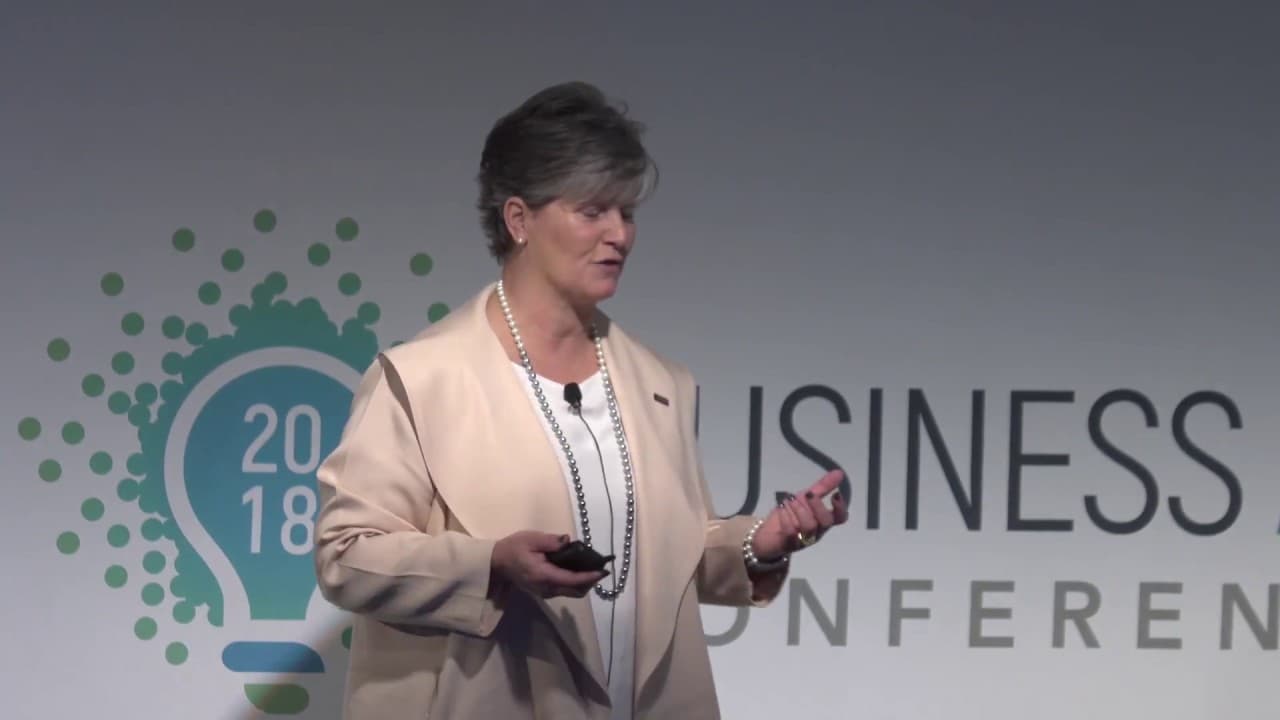

 A story of personal growth and leadership transformation. Nanci talks about her journey of building an agile organization and reshaping teams, workflows, and leadership. She shares the method and approach she took to grow, learn, and lean in. Along the way she found out just how hard changing culture can be, but realized that it can be done. She will share her learnings as well as observations on colleagues who grew and transformed as a part of this effort.
A story of personal growth and leadership transformation. Nanci talks about her journey of building an agile organization and reshaping teams, workflows, and leadership. She shares the method and approach she took to grow, learn, and lean in. Along the way she found out just how hard changing culture can be, but realized that it can be done. She will share her learnings as well as observations on colleagues who grew and transformed as a part of this effort.
